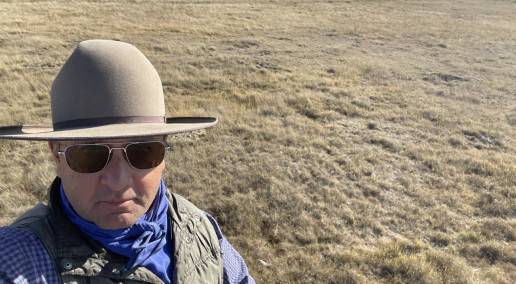During the closing keynote speech at the morning session on Nov. 29 at the Canadian Forage and Grassland Association’s 14th Annual Conference in Harrison Hot Springs, B.C., Dan Undersander from the University of Wisconsin presented his topic on measuring and reporting positive impacts for greenhouse gasses (GHG).
To open his speech, Dan described the Land of Lakes Co-Operative, that contains three major divisions that link dairy foods, animal feed, and seeds and crops. Dan also described Truterra, a subsidiary company whose purpose is to develop software for GHG credits related to the dairy industry. Truterra works with farmers, agriculture retailers, and food companies to improve profitability and soil health, while reducing risk and enhancing on-farm sustainability. Sampling farms and extending GHG results is often inappropriate for determining upstream Scope 3 footprint due to size variability. Truterra’s Scope 3 does not require any surverying, and instead develops models based on their entire entity, so that all milk production and cows are included in the analysis, along with feed, manure, and energy. The GHG productions associated with animal feed production is calculated for each foodstuff, using data for planted acres, harvested acres, unharvested acres, and total overall production.
To estimate their Milk Carbon Footprint (MCFP), farmers must record what they do as well as what changes are made and when, this enables them to show how they are making GHG credits. By being an effective operator, farmers will reduce GHG and will make more profit through savings.
There are many opportunities that farmers can take to improve MCFP across four main areas, the first of which is enteric methane, which makes up about 40-50% of MCFP. Farmers can increase milk production per cow to reduce CH4 emissions per unit of milk produced, as well as reduce incidence of disease. An average herd turnover is two-and-a-half lactations, which causes depreciation of around $664-898 a year. If farmers shifted to a 20% herd turnover, increasing lactations to five, depreciation is only $340-469 a year. By trying to keep cows longer, we can lower the GHG emissions associated.
The second opportunity for farmers to reduce MCFP is manure. Farmers can reduce GHG emissions by providing dietary supplements to cattle and raising them on pasture. Thirdly, they can modify rations which reduces food wastes, and use feed additives in order to reduce CH4 production. Lastly, farmers can produce animal feeds by implementing a more diverse cropping rotation, keeping legumes for at least two years, using legumes for nitrogen credit, and by improving harvest, storage and feed efficiency.
In summary, by increasing GHG efforts, farmers can gain independence from purchased inputs, allowing immunity to fertilizer costs due to legume rotations. Furthermore, we all must work together in order to procure GHG credits and develop a reporting methodology for GHG on farm.
Conference recordings
If you’d like to watch the full recording of this panel, or any other 2023 Conference sessions, please email [email protected] for information on how to purchase access. Note, if you attended the 2023 conference, the recordings are available for free to those who registered for the conference.
To read more about each speaker, check out the CFGA 2023 Conference agenda.
Back to October 2024



Leave a Comment